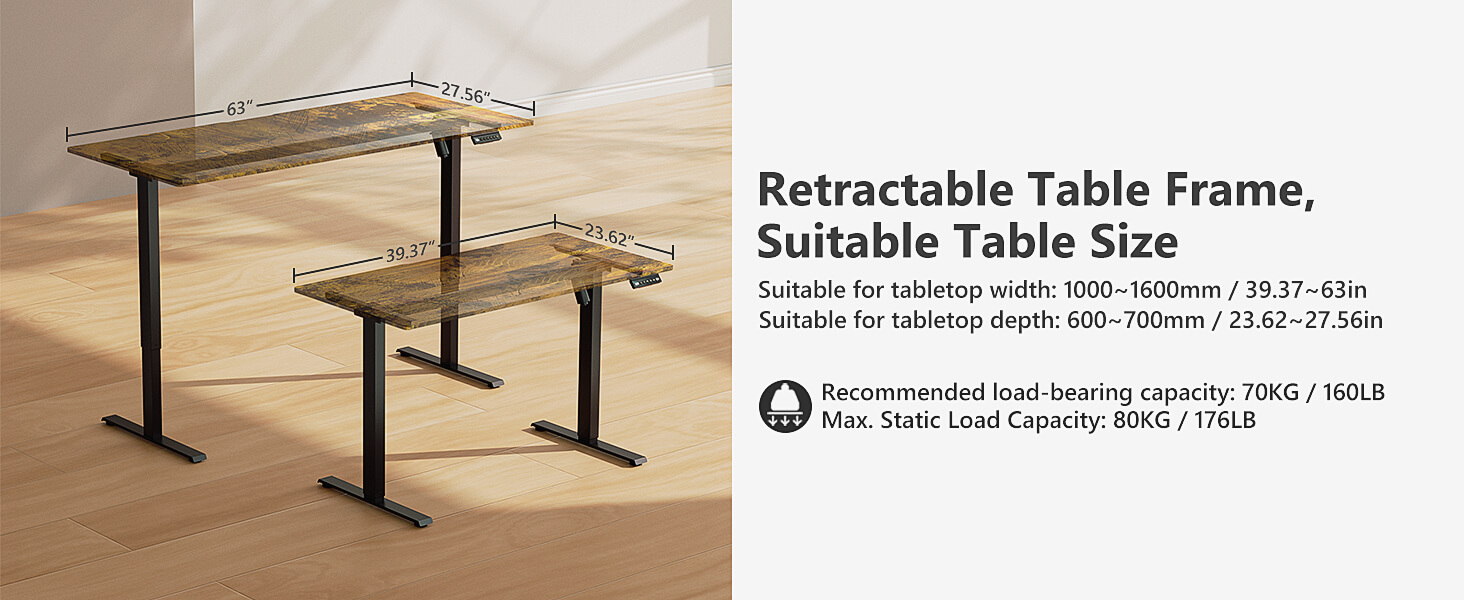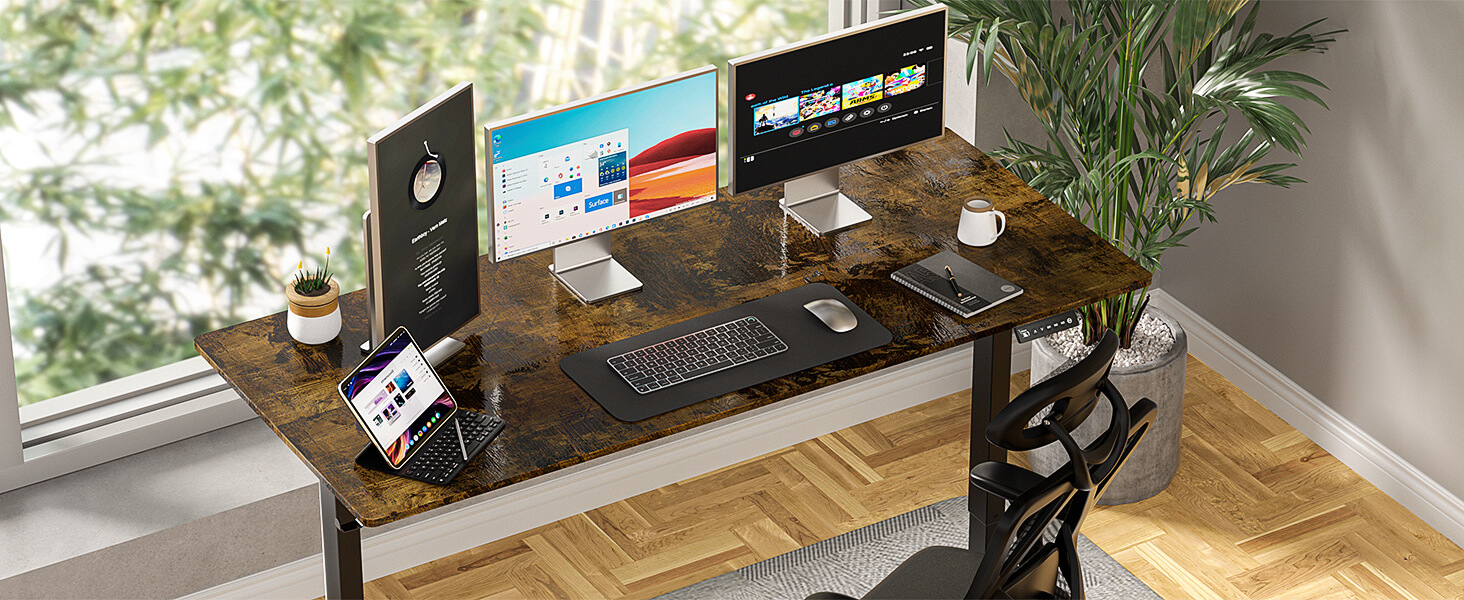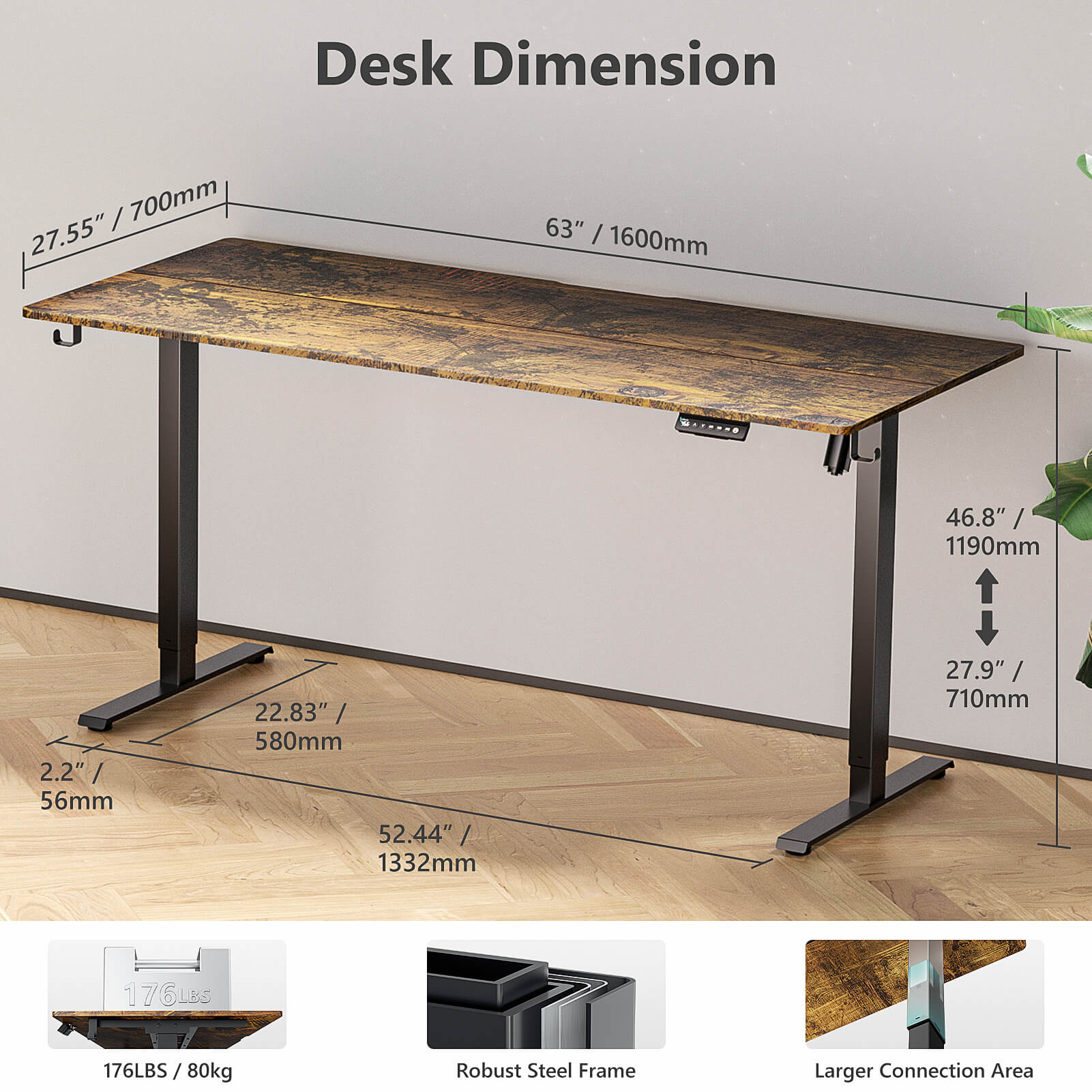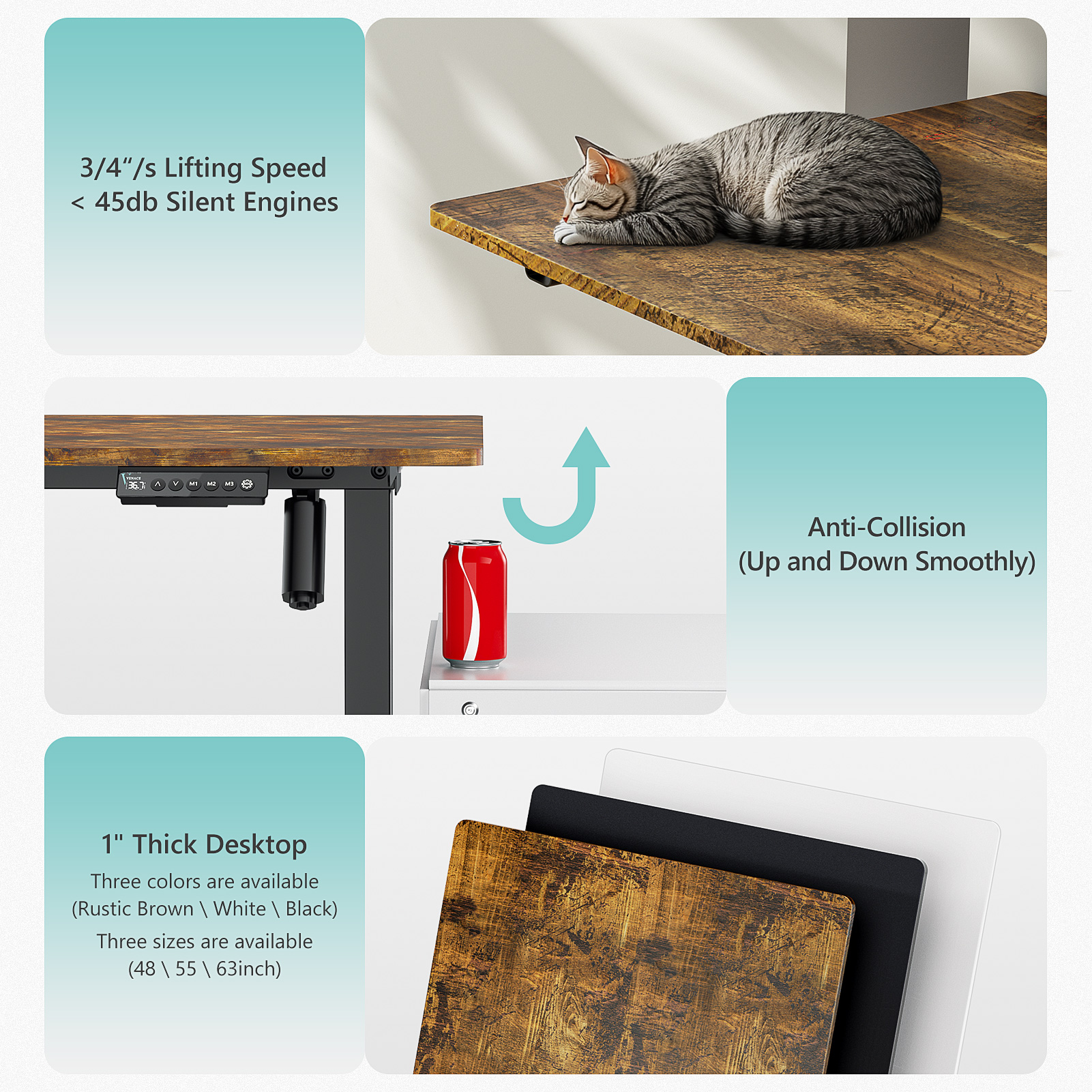Small office, big ambitions. If you’re working in a compact space, you know that every inch counts. But here’s the good news: standing desks can fit into even the smallest offices without sacrificing comfort or productivity. In fact, they may just be the perfect solution to help you maximize space and stay healthy while working.
So, how can you take advantage of this versatile desk? Let’s break it down. With the right standing desk, you can create a functional, ergonomic workspace—without overcrowding the room. Here’s how to make the most of your limited space.

1. Why Choose a Standing Desk?
Many assume standing desks are just a trend, but the reality is they can vastly improve your office’s functionality. By allowing you to alternate between sitting and standing, a standing desk promotes better posture, increases energy, and reduces the health risks associated with prolonged sitting. Plus, they help you stay more active, which is crucial when working in a small office where movement can feel restricted.
Instead of being confined to a traditional desk, a standing desk offers flexibility. Whether you want to stand for meetings or work at your computer, you can adjust as needed. In a tight space, that flexibility is key to creating a dynamic, comfortable work environment.
2. Compact Size with Maximal Functionality
You may not have the luxury of space, but that doesn’t mean you should settle for less functionality. The right standing desk doesn’t take up much floor space. It’s about choosing the right design that fits your needs. Measure the available space carefully—this helps you choose a desk with a small footprint but enough surface area to be practical.
Consider a model that is narrow or wall-mounted, as this can make your office feel larger and more open. Look for adjustable height options, which will allow you to easily transition between sitting and standing, giving you flexibility without sacrificing space.

3. The Benefits of Adjustable Frames
Fixed-height desks? They’re out. Adjustable standing desk frames are the future. The flexibility to change the desk height to suit your preferences is indispensable, especially in a small office. An adjustable desk frame can support a range of seating and standing positions, so you can work in a way that feels comfortable and energizing.
Electric models take convenience to another level. At the press of a button, you can raise or lower your desk—perfect for when you need to alternate between tasks or work styles quickly. But if you’re looking for a more budget-friendly option, manual adjustability will still give you flexibility, without breaking the bank.
4. Wall-Mounted Solutions for Space-Saving
In a small office, wall-mounted desks are an ingenious solution. These desks can be folded away when not in use, opening up valuable space. This is especially useful for multitaskers who need a temporary desk but don’t have the luxury of a full-time workspace.
Wall-mounted standing desks take it one step further, offering a clean, minimalist look that is both functional and efficient. And when you’re done for the day, simply fold the desk back up, leaving your office looking tidy and spacious.
5. Smart Storage Options
Storage is a big concern in smaller offices. But standing desks can help solve this problem. Many standing desks come with built-in storage solutions like drawers and shelves, providing a place for your office supplies without adding clutter to your workspace.
If your desk doesn’t come with built-in storage, consider adding vertical storage solutions. Shelves mounted above your desk or floating racks will keep your office organized while maximizing your available floor space. The key is to keep everything you need within arm’s reach, without crowding your desk.

6. Manage Those Cables
A common issue in small offices is cable clutter. A standing desk with good cable management can keep your space clean and organized. Look for desks that feature cable trays or clips, which can help route wires neatly under the desk.
If your desk doesn’t have built-in cable management, don’t fret. Use cable organizers or clips to keep everything tidy. A clean, organized desk is essential in a small space—it reduces distractions and helps maintain focus.
7. Make the Most of Vertical Space
When floor space is limited, it’s time to think vertically. Use the walls to your advantage by installing shelves or hanging storage solutions above your standing desk. This can give you extra space for books, office supplies, or even personal items, all without crowding your workspace.
Vertical storage not only saves space, but it can also make your office feel more open. Instead of keeping everything on the desk, you can store items out of sight, creating a more streamlined, productive environment.
8. Choose the Right Materials
In a small office, the materials you choose for your desk matter. Light-colored woods or metals can create a sense of openness, while darker finishes may make the room feel cozier. But no matter what you choose, the material should be durable and easy to clean.
Standing desks are designed to last, but the right material will make a difference in how well your desk blends into your office decor. Whether you prefer a modern metal frame or a more traditional wooden design, select a material that complements the feel of your space.

9. Focus on Ergonomics
Even in a small office, comfort is paramount. A standing desk should allow you to maintain proper posture while sitting or standing. The key is flexibility—choose a desk that allows for height adjustments, so you can easily switch positions and reduce the strain on your body.
Make sure the desk is at the right height for both sitting and standing. Your arms should be at a 90-degree angle when typing, and your screen should be at eye level. A well-positioned desk will minimize the risk of strain and improve your overall comfort.
10. Budget-Friendly Options
You don’t have to break the bank for a quality standing desk. Budget-friendly options are available in both manual and electric models. Think about what features you really need—an electric height adjustment? Storage? Cable management? You can find standing desks that meet your requirements without going over your budget.
When selecting a standing desk, make sure you’re getting good value for your money. A lower-cost desk might not have all the bells and whistles, but it can still provide the basic functionality you need to stay productive.
